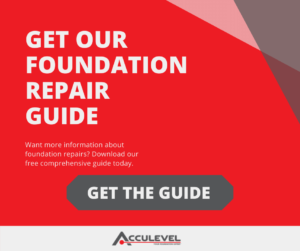What Are The Three Slab Foundation Types?
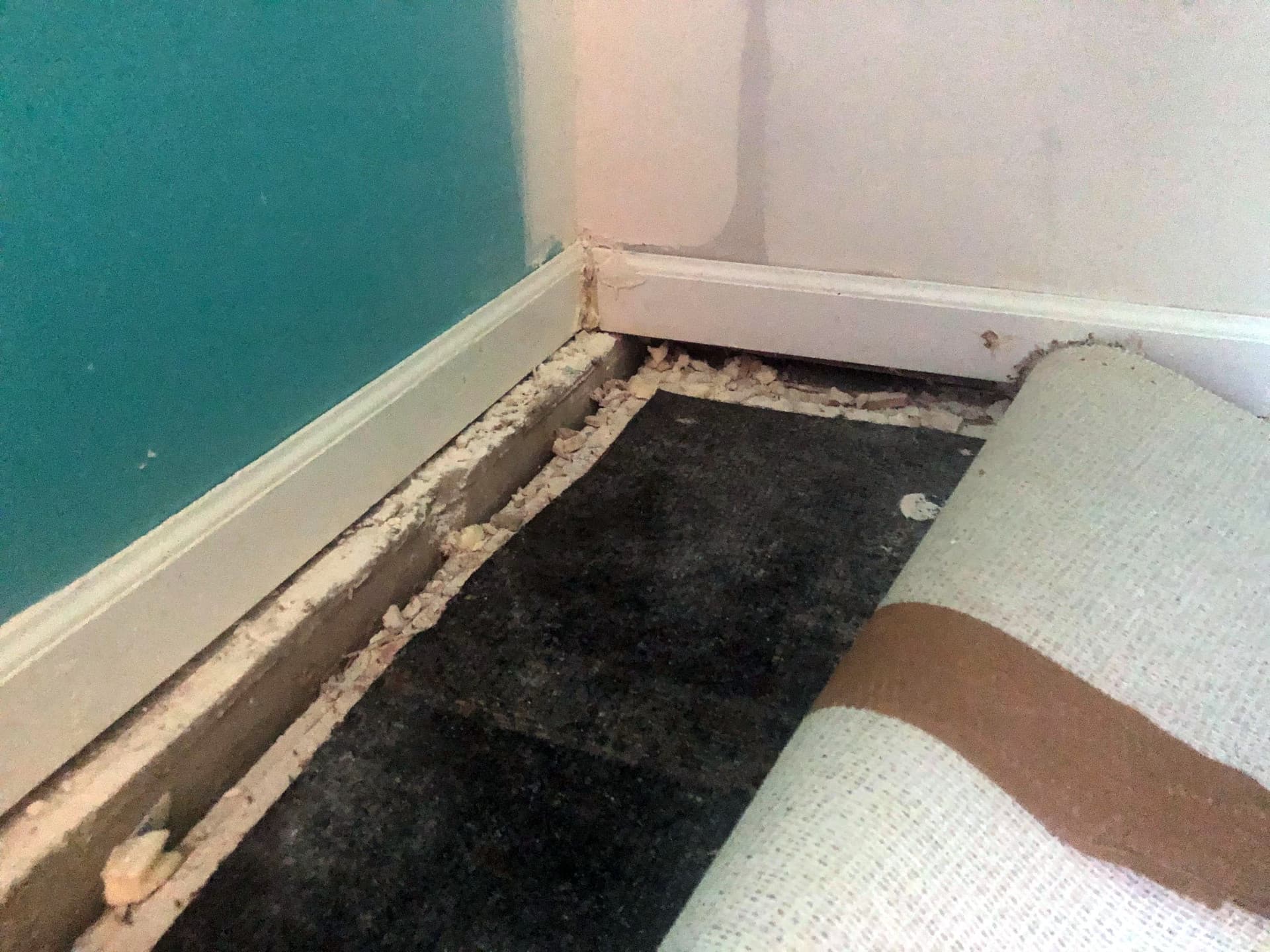
If you don’t have a basement or a crawl space under your house, you have a concrete slab foundation. This is common knowledge, right? But did you know that there are different types of slab foundations?
If you answered no to this question, you’re not alone. In fact, I think most homeowners assume the same thing I did- that all slab foundations are alike. But there are several different methods builders use to create a poured concrete foundation, and how you repair them can vary.
Acculevel is a family-owned and operated company that focuses on repairing foundations and waterproofing homes. Founded by Andy Beery, we are a growing regional company with small-town values; our service area includes all of Indiana and portions of the surrounding states. Since we started in 1996, we have helped more than 35,000 homeowners restore health and stability to their homes.
In this article, we’re going to review the three different ways concrete slab foundations are made. We’ll also explain how they should be repaired, if they become cracked, damaged or settle unevenly.
1. A Typical Slab With Traditional Footings
This is the most common slab foundation type, and is also typical of homes with basements. A footing (or footer) is a large piece of concrete that acts as the base of the home’s foundation. It can steel rebar and is only poured around the perimeter.
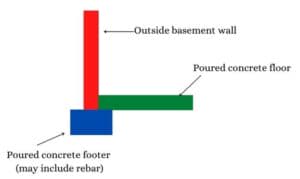
This is a rough sketch of a slab foundation with footer (done by the author).
If you look at the sketch we provided, you’ll notice that there’s a gap under the poured concrete floor. This gap is usually filled with a type of fill material to act as a level surface and support for pouring the slab.
However, if this layer is not tamped down well enough, or is eroded, it will leave an empty void. This is often what causes a slab foundation to crack. As the weight of your home presses down, the concrete that is not properly supported cracks under the pressure.
How Do You Fix A Cracked Slab Foundation with Traditional Footings?
The best method for this situation is a concrete leveling repair like slabjacking. The fill material is injected under the slab foundation. As it builds up and fills the void, it gradually lifts the foundation as well. The crack can then be filled and smoothed, returning your foundation to level.
Traditional Footings Can Also Be Damaged By Erosion
If water erodes the ground under one of your footers, this will cause it to “settle.” In our industry, settling means one portion of your foundation is sinking at a faster rate than the others. This causes strain across the foundation.
The most common symptoms of this are cracks in the drywall, especially around doors and windows. The doors and windows themselves may become difficult to open (sticking). You may also have cracks across the floor and/or the floor may slope towards the outside.
You Need Piers to Repair A Settling Slab Foundation
Helical piers are the best way to stabilize a setting foundation. These are long steel posts that are screwed into the ground next to your foundation. When they reach stable soil (measured by a pressure gauge), they are attached to the footer to stop it from moving.
In some instances, the footer can also be lifted back towards its original position. This isn’t a guaranteed result; how long the settling has been happening and how far the footer has settled are both major factors to consider.

These photos were taken by an Acculevel project advisor during an in-home assessment. The front corner footing has settled several inches, causing both the wall and floor to crack.
As you can see in the photos above, sometimes the slab will also crack when a footer settles. This can be caused by the strain on the floor, as the footing pulls away. It could also be caused by the same erosion that is undermining the footing. In either case, when a situation like this occurs, you need both piers to stabilize the foundation AND slabjacking to repair the crack(s).
2. A Floating Slab Foundation
A floating slab foundation also includes a concrete footer, but the exterior walls are built directly on top of the footer. The slab floor is poured after this, meaning that it “floats” or rests on the footing but doesn’t support as much of the building’s structure.
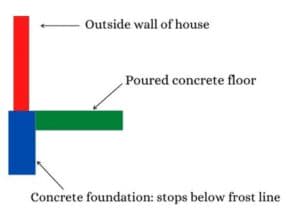
This is a rough sketch of a floating slab (done by the author).
Erosion can undermine the slab, just like it does with traditional footings. But because the floor is separate from the footer, piers may be the only repair required. The settling footer won’t exert the same pressure on the floor as it does in the traditional build style.
Slabjacking would only be necessary if erosion has also occurred under the floating slab. This would create a void that could lead to the slab cracking from a lack of support.
3. A Monolithic Slab Foundation
Monolithic slab foundations are the least common type of foundation. (It’s rare, but we have seen a few basements with this slab type, also.)
The entire surface of the building site has to be tamped down and fully prepared, all at once. This is because a monolithic foundation is all one piece; the concrete footing and floor are poured together.
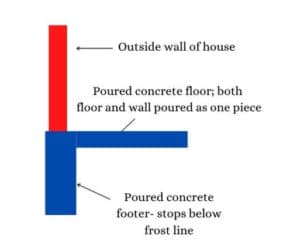
This is a rough sketch of a monolithic slab (done by the author).
Erosion is a threat to monolithic slab foundations, just like it is the other types of slab foundations. Because the floor and footers are a single piece, all repairs will include both piers and concrete leveling. Any changes made to a part of the whole, have to be mirrored in the other part.
Want More Information About Slab Foundation Repair?
We have developed a free resource for homeowners, that we call the Foundation Repair Guide. It addresses all of the commonly asked questions about foundation types, warning signs and symptoms, repair methods, costs, and more!
If you would like more information about slabjacking (our method of concrete leveling), check out our playlist on our YouTube Channel:
Do You Need A Professional to Evaluate Your Slab Foundation?
We’ve presented a lot of information, repair terms, and foundation details in this blog. If you’ve noticed some warning signs of foundation trouble, but you’re not sure how it needs to be addressed, give us a call at 866-953-1501 or complete our online form.
We’ll make an appointment for you with one of our friendly and knowledgeable project advisors. They will sit down with you to review the symptoms you’ve noticed, potential warning signs that worry you, then do a complete home assessment.
Once they’ve completed their review of your home, they’ll discuss what they’ve found, what they’d recommend, and all of the options available to you. As a team, you and your advisor will decide on the best whole-home solution that will protect and preserve your home for years to come.
If you don’t live in our service area, make sure the contractor you hire is properly insured and accredited by the Better Business Bureau. You can also use our checklist of questions to ask a contractor; this is another free resource that provides a detailed list of subjects to cover with any potential home repair company.
